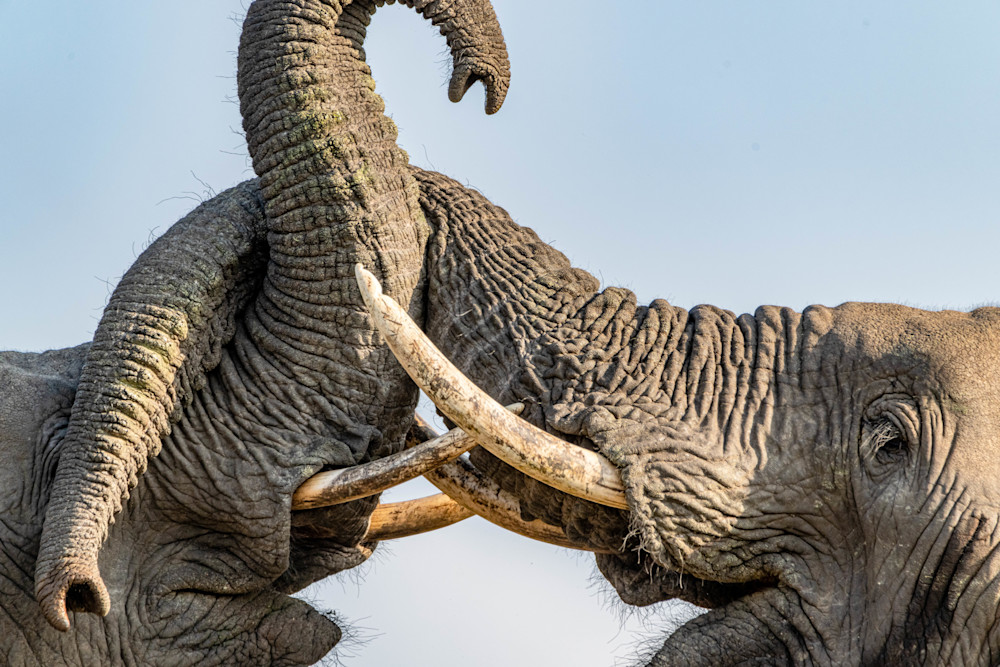The elephant's trunk is a remarkable and multifunctional appendage, combining strength, dexterity, and sensitivity. Here's an exploration of the unique features and capabilities of elephant trunks:
1. **Powerful Extension:**
The trunk, or proboscis, serves as an elongated and muscular extension of the elephant's upper lip and nose. It can be extended and retracted with incredible strength and precision.
2. **Versatile Prehensility:**
One of the most remarkable features of the elephant trunk is its prehensility. It acts like a flexible, grasping appendage capable of picking up objects of various sizes and shapes. The tip is extremely sensitive and can delicately pluck a single leaf or lift heavy logs.
3. **Fine Motor Skills:**
Despite its large size and strength, the elephant trunk exhibits fine motor skills. Elephants can use their trunks to perform intricate tasks, such as picking up tiny objects or even painting, showcasing the remarkable coordination of their muscular appendage.
4. **Sensory Perception:**
The trunk is equipped with an extraordinary sense of smell. Elephants use their trunks to detect scents from vast distances, identifying food sources, water, or potential dangers. The olfactory capabilities are crucial for their survival in the wild.
5. **Communication Tool:**
Elephants use their trunks for communication within the herd. They may touch and caress each other with their trunks, conveying emotions, comfort, or reassurance. The trunk can also be used in play, bonding, or to show affection.
6. **Drinking and Bathing:**
The trunk serves as a versatile tool for drinking and bathing. Elephants can draw water into their trunks and then either drink directly or spray the water over their bodies. This helps in cooling down and maintaining hygiene.
7. **Tool for Feeding:**
In addition to grasping food, the trunk is used to strip leaves and bark from branches. Elephants can skillfully manipulate their trunks to access vegetation that may be out of reach for their mouths.
8. **Vocalization:**
While not a traditional vocal organ, the trunk contributes to certain vocalizations. Elephants may trumpet, rumble, or produce other sounds by expelling air through their trunks, adding an auditory dimension to their communication.
9. **Support in Navigation:**
Elephants use their trunks to explore and navigate their surroundings. In dense vegetation, the trunk can push aside obstacles, clear pathways, and assess the terrain ahead.
10. **Emotional Expression:**
The trunk is an expressive part of an elephant's body language. It can convey a range of emotions, from curiosity and playfulness to assertiveness and agitation. The movements of the trunk are a key component of elephant communication.
The elephant trunk stands as a testament to the ingenuity of nature, offering elephants a tool that is both powerful and sensitive, allowing them to interact with their environment in diverse and meaningful ways.














